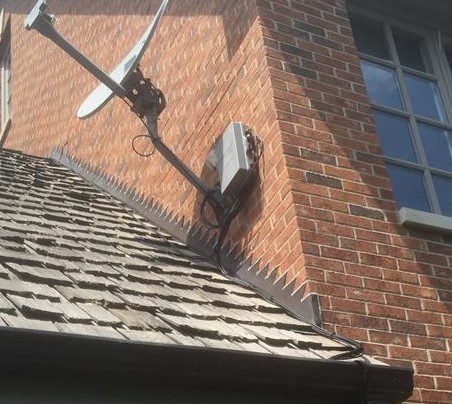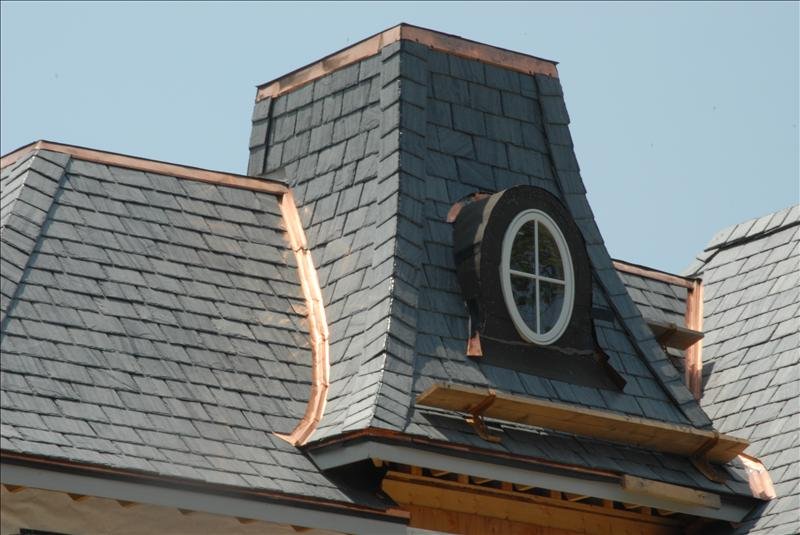Contrary to what you might think, any roof is quite a complex arrangement of many components, the common purpose of which is to protect the interior of your home from water flowing in, snow falling in, and heat escaping. In this article we will find out what role roof flashing plays and why it is such an essential component of any structure.
What is Roof Flashing?
Roof flashing is usually a metal element, made of a thin sheet of metal. It is installed where shingles / tiles / shakes connect to other elements of the house, such as walls and chimneys. Thanks to roof flashing, water does not get into the resulting gaps, but only flows straight into the gutters. So we can say that flashing is a kind of seal for your roof.
Types of Roof Flashings
As is often the case in roofing, there are many types of flashing, which differ primarily in their application. We will discuss the differences in materials later in this article.
Apron Flashings

Apron roof flashings are used at the joints between the roof and chimneys, walls and other protruding elements, such as skylights. They are usually L-shaped and, as a rule, are made of metal, such as copper. Apron roof flashings are used at the joints between the roof and chimneys, walls and other protruding elements, such as skylights. They are usually L-shaped and, as a rule, are made of metal, such as copper.
Step Flashings

A less knowledgeable person might say that step flashings are not very different from apron fashings. Indeed, both solutions are used in very similar places, that is, at the joints between the roof and vertical surfaces such as walls and chimneys. However, there are key differences – step flashings are much shorter and each section is mounted under a single shingle / tile. Reminiscent of step flashings or a saw blade, they add beauty to your home.
Counter Flashings

Another quite similar type of flashing, but the scotch is in the details. Unlike apron and step flashings, the counter ones are fixed between the bricks. This means that they are worth considering especially during chimney rebuild or new home construction.
Roof Valley Flashings
So far, we have described flashings designed to protect the joints of the roof with walls and chimneys. However, we should not forget the areas particularly prone to leakage, namely roof valleys. They are where hundreds of liters of water flow down, so we should do what we can to keep the joints completely tight. Roof valley flashings are simply elongated strips installed along the entire length of the roof. For some materials (asphalt shingles), there is no need to install them.
Roof Flashing Materials and Their Advantages
In addition to a wide range of technical solutions, there is also a very wide range of materials available, each of which has both advantages and disadvantages:
Aluminum

Aluminum is probably the most common material of choice. It is relatively inexpensive and very durable because it does not rust. Aluminum is also more malleable than steel, making it fairly simple and inexpensive to machine. At A.B. Edward, we bend aluminum flashings ourselves, which guarantees a perfect fit of all parts.
When choosing aluminum flashings, you must remember that it will not be possible to use them in every case. If the metal is in contact with cement, you need to choose metal sheets covered with a special coating, because otherwise, there will be very rapid corrosion.
Copper

For homes in places like Winnetka, Glencoe, Lake Forest and Hinsdale, copper flashing is extremely popular – of course, this is due to the relatively high price of this material. In lieu of the higher cost, you get a completely corrosion-resistant one that will also work well near large bodies of water. The installation of copper flashing is also very simple, so the service itself should not be too expensive.
When choosing copper roof flashings, unfortunately, you have to reckon with a rather high susceptibility to hail. True, in many cases, the sheet metal will not lose its protective properties, but it will certainly not look as good as it did right after installation.
Stainless Steel

Stainless steel, as the name suggests, is a corrosion-resistant material. Very importantly, it also copes relatively well with acid rain, which is increasingly common in urban areas. With fairly high customization options and a low price, stainless steel is a good choice for those pursuing slightly more budget-oriented projects.
Composites
For a long time, we have seen that with the growing popularity of composite slate, composite flashings are also appearing on the market. These are very interesting products that cope well with temperature changes and UV radiation. At a relatively low cost, you can protect your home from moisture very well.
Is It Always Necessary to Install Roof Flashing?
Contrary to appearances, not always. Many roofs covered with asphalt shingles do not have flashings installed, and their owners have no reason to complain – the structure is airtight and there are no problems with moisture. With other materials, things get a little more complicated. Cedar shakes, for example, change their volume with fluctuations in humidity, which can cause leaks to develop after your roof dries out.
Also, for slate roofs, we suggest that you opt to install flashings, since the side surface of stone tiles is never perfectly even. Sealing is simply essential, because while you may not need it in the first few years after installation, the situation may change in 2-3 decades.
How to Choose Roof Flashings?

Although usually, the choice of the best technical solutions is left to the roofing contractor, necessarily, your opinion has a decisive influence on the type of flashing finally selected. The first decision you should make concerns the type of material used. The range of manufacturers is very wide, so you will certainly be able to find something for yourself. In doing so, it is worthwhile to be inspired by the decisions of your neighbors – in your area there will certainly be a house that will be finished in a similar way.
If you want convenience, simply choose aluminum in a color that matches the details, such as the window frames – we will take care of the rest of the details. It’s up to the roofing contractor to suggest the right brand for you and handle the installation yourself. If you are looking for more elegant solutions, contact a designer who will choose the best material and color and take into account all your needs.
When Is It Time to Replace Roof Flashings?

Replacing the roof flashings themselves happens very rarely – as long as they are installed correctly, there is no reason to do anything with them. In practice, the main reason is to replace the entire roof, because although theoretically it is possible to use the old flashings when changing tiles / shingles / shakes for new ones, this happens very rarely. Why?
Because the risk of problems is very high. Any bending of the flashing can cause leaks. Metal also ages, and a new roof with old details will not look aesthetically pleasing. Given the relatively low price of flashings, it is unlikely to be worth saving on them, especially since the possible consequences of their failure can already be very expensive to fix.
How Much do Roof Flashings Cost?

As is usually the case, the answer is “it depends.” If you are installing flashing around a small chimney, the replacement service should cost between $500 and $1000. If the chimney is larger and you decide to use copper, the bill could be as high as $2000, but typically, the amount settles around $1500.
If a total replacement of flashings is involved, you probably order a roof replacement service. In such a situation, the cost will, of course, be much higher – in the case of very large houses with many valleys on the roof, the price of flashing will exceed $4000-$5000. Of course, keep in mind that you can learn the exact amounts only after receiving a free quote. Without a detailed inspection of the roof, talking about money doesn’t make much sense, because literally everything can change.
How Long Does it Take to Install Roof Flashings?
The flashing installation service is not very complicated. First, the roofer must accurately measure all the dimensions of the roof – nowadays, conventional tools such as a tape measure can be used for this, as well as a laser rangefinder and even satellite images. Next, the installation team must properly bend the metal components and bring them to the roof. At the very end comes the final installation. In the case of the chimney, the whole process takes about half a day. Rarely does it take more than 1 day to install roof flashings.



